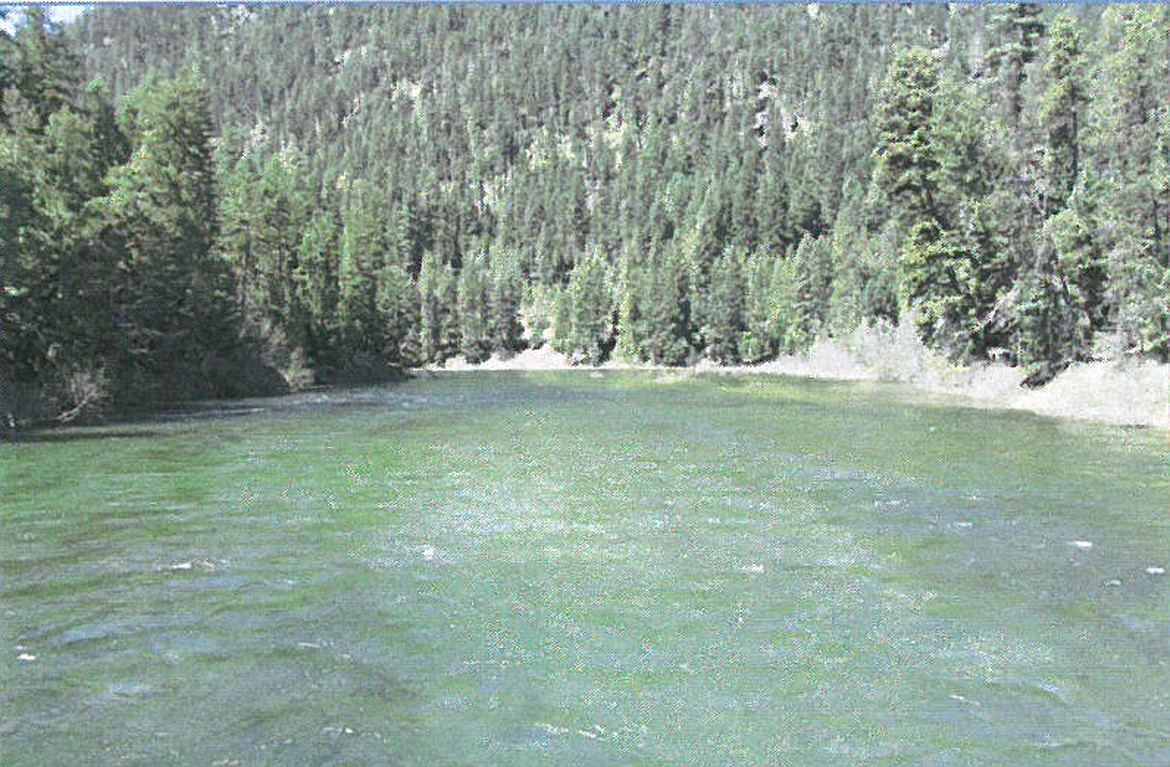From fish to driftyard: Lakes Commission meeting a busy one
PRIEST RIVER — The Lakes Commission saw a busy meeting at the Priest RIver Library Wednesday.
At the quarterly meeting, Taylor Johnson, chief of Natural Resources Management for the U.S. Army Corps of Engineers at Albeni Falls Dam, gave an update on the ongoing projects around Lake Pend Oreille.
The Clark Fork Driftyard saw several repairs, including the replacement of nine pilings, 200 feet of “shear boom” which directs floating debris into a containment area, and 750 feet of containment logs.
Next year the Corps plans to replace another 200 feet of shear boom and another 700 feet of containment logs, which contas had not been updated since the 1950s, Johnson said. There are also plans to complete the breakwater feasibility study, which would protect the driftyard and also aid ongoing habitat restoration efforts in the area.
Johnson also brought up the fish passage planned for Albeni Falls Dam. The design is 35% complete, but should be finished by the end of the year. The passage would allow juvenile and adult bull trout a way to cross the dam. The estimated completion is in 2027. Johnson said the project is fully funded and that, once a contract is in place, construction should start in two to three years.
Johnson also told the commission that the Corps administered recreational areas would close soon or have already done so Riley Creek closed Sept. 16 and reopens May 6. Albeni Cove, Priest River, and Springy Point, closed Sept. 9 and are set to reopen May 13. Trestle Creek Recreational Area will close Monday, Oct. 31 and reopen April 1 next year.
In addition to ongoing projects, the Corps also presented on the water management season.
After Johnson, Leon Basdekas, the Corps’ senior water manager for the Upper Columbia, presented over the current water year. The snowpack for this year was 108% as of May 1, 2022. In 2021, that number was 85%.
This year, the melt hung on for about two weeks, Basdekas said. The June runoff was about 150% above average. This delay is worrying from the water management perspective, Basdekas said.
Early summer storms in June triggered a region-wide flood emergency, which Basdekas said required the involvement of other governmental agencies as well as Canadian officials to coordinate management for the water system.
While storms were not as bad as forecast, Albeni Falls Dam officials switched to freeflow operation to allow as much water out as possible. The Corps “also held a bunch of water back at Libby,” which Basdekas said prompted fears of a major flood emergency earlier in June – fears which were nearly realized June 18. The dam was on freeflow for 11 days. This emergency also prompted the county to extend the wakeless zone from 100 to 500 feet on area waterways until the end of the month.
After those two weeks, lake management largely returned to normal. Now Albeni Falls Dam is at a moderate outflow of 26 thousand cubic feet per second (kcfs). The average outflow on a given day is 24 kfcs. The Corps is aiming for Lake Pend Oreille’s winter pool elevation of 2,051 - 2,051.5 feet by Nov. 15, which Basdekas said will aid kokanee salmon spawning. The artificial high water mark is 2061.5 feet.
Pend Oreille was not the only lake that saw management complications. The late melt-off gave the state their fare share of concerns on Priest Lake as well.
Michelle Richman of the Idaho Department of Water Resources, presented on the Outlet Dam on Priest Lake. Richman said that in preparing for the year, SNOTEL sensors which measure snowpack in Bunchgrass Meadow in Pend Oreille County, Wash., and in Hidden Lake in Boundary County, are their only tools, since they lack the funding for streamflow gauges.
Richman said the SNOTEL data in Bunchgrass Meadow set the record for the latest snowmelt in the 39 years that information has been recorded. This delay led to a significant increase in Priest Lake depth and flood hazards during the snowmelt that came with the summer. The peak gage height for the lake was around 5.5 feet. The record level is 5.59 feet, and was set in 2018.
Lake stabilization was not reached until the last half of July, Richman said. They were able to hold the lake at 3.2 feet for the rest of the summer and announced that the fall drawdown had now ended and that the gates are now fully out of the water. She also mentioned the height increase on the gates, which was completed on all of the dam’s eleven gates earlier this year. Richman said this helped IDWR maintain the lake level high enough to have a little reserve pool later in the summer.
The Lakes Commission will hold its next quarterly meeting in Sandpoint.



